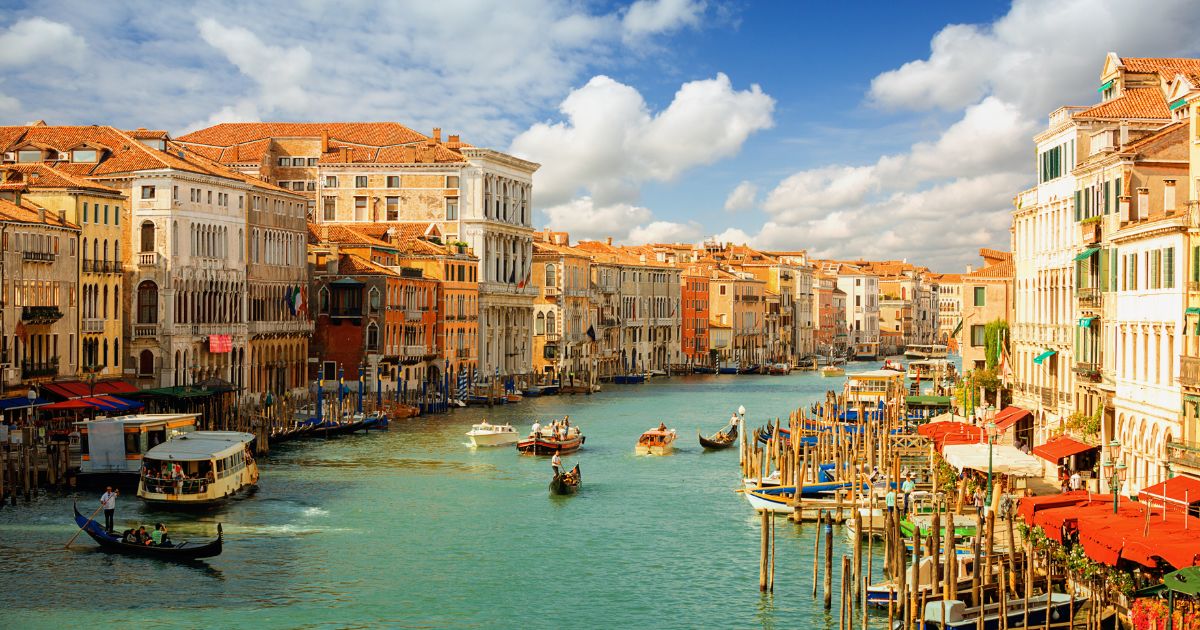Your Italian ancestry might be more than just a family story—it could be your ticket to Italian citizenship. Thanks to Italy’s Jure Sanguinis law, you might already qualify for Italian citizenship by descent, no matter how many generations have passed.
For many, Italian dual citizenship isn’t just about reconnecting with their roots—it’s about gaining an Italian passport, the freedom to live and work anywhere in the European Union, and passing that privilege on to future generations. But before you start planning your move, there’s one big question: Do you actually qualify?
And if you do, what does that mean for your tax obligations? Becoming an Italian citizen could impact your financial responsibilities, especially if you plan to live in Italy. Let’s break it all down—who qualifies, how to apply, and what you need to know before making it official.
📋 Key Updates for 2025
- Increased Fees: The consular application fee for Italian citizenship by descent has doubled from €300 to €600 per adult applicant.
- Stricter Eligibility Rules: If an Italian ancestor naturalized while their minor children were still dependent, citizenship transmission is considered interrupted, impacting eligibility.
- Potential Residency Reduction: A proposed law could reduce the residency requirement for naturalization from 10 to 5 years, making citizenship more accessible.
What is Italian Citizenship by Descent (Jure Sanguinis)?
Jure Sanguinis or Jus Sanguinis (Latin for “right of blood”) is the principle that Italian citizenship is inherited through ancestry and bloodline rather than birthplace. Unlike naturalization, which requires residency, Jure Sanguinis allows individuals with Italian-born ancestors to claim citizenship—often without ever having lived in Italy.
Many countries limit citizenship by descent to just one or two generations, but Italy has no generational limit. As long as citizenship was passed down without interruption (meaning no ancestor renounced their Italian citizenship before having children), you may be eligible—whether your Italian roots go back one generation or several.
For U.S. citizens, holding Italian dual citizenship means enjoying the benefits of an Italian passport, including EU residency rights, while maintaining U.S. citizenship. However, it can also come with additional tax obligations if you plan to live in Italy, which is something to keep in mind as you explore your options.
Who is eligible for Italian Citizenship by Descent?
If you have Italian ancestry, you may qualify for Italian citizenship by descent (Jure Sanguinis)—but not everyone with an Italian ancestor is eligible. Italy has specific rules about who can pass down Italian citizenship, and your eligibility depends on when and how your ancestor became a citizen of another country.
Key eligibility criteria
To qualify for Italian dual citizenship, you must have an Italian ancestor who:
- Was born in Italy after March 17, 1861 (when Italy became a unified nation).
- Was an Italian citizen at the time of their child’s birth (citizenship must have been passed down without interruption).
- Did not naturalize in another country before passing citizenship to the next generation.
- Did not voluntarily renounce their Italian citizenship before August 16, 1992.
If your ancestor acquired foreign citizenship or became a naturalized U.S. citizen before their child was born, the chain of citizenship was broken, and you may not qualify. However, if they naturalized after their child’s birth, you could still be eligible.
How far back can you go?
Unlike many countries that limit citizenship by descent to parents or grandparents, Italy has no generational limit. As long as each ancestor passed down their Italian citizenship before renouncing it, you could qualify even if your great-grandparents or earlier ancestors were Italian-born.
Special rules for applicants with female ancestors (Pre-1948 cases)
Historically, Italian women could not pass citizenship to their children before 1948. This means if your Italian ancestor was a woman and her child was born before January 1, 1948, your claim would normally be denied under standard consular procedures.
However, thanks to a 2009 court ruling, applicants with a maternal line of Italian descent can still apply—just not through an Italian consulate. Instead, 1948 cases must go through the Italian court system, often with the help of an attorney. While this adds an extra step, many applicants have successfully obtained Italian citizenship this way.
How to prove your Italian ancestry
To claim Italian citizenship by descent, you’ll need official documentation that traces your lineage back to your Italian ancestor. This can be the most time-consuming part of the process, particularly if your family history spans multiple generations and countries.
Required documents
Here’s what you’ll need to get started on your application process:
Vital records for your lineage
- Your birth certificate (and those of your direct ancestors).
- Marriage certificates (for you and your ancestors, if applicable).
- Death certificates (for any deceased ancestors in your direct line).
Naturalization records
- If your Italian ancestor became a U.S. citizen, you’ll need their naturalization certificate and associated documents (Declaration of Intention and Petition for Naturalization).
- If they never naturalized, you must provide an Original Certificate of Nonexistence of Records from U.S. Citizenship & Immigration Services (USCIS), plus the earliest available U.S. census showing their immigration status.
Proof of residency and identity
- A valid passport or ID.
- Proof of current residency, such as a utility bill or lease.
Official application forms
- An application for Italian citizenship.
- A sworn statement confirming that neither you nor your ancestors renounced Italian citizenship.
Apostille and certified translations
- All U.S. documents must be apostilled and translated into Italian by a certified translator.
Application fee
- A €600 money order payable to the Italian consulate where you’re applying (confirm the amount in USD before submitting).
Where to find missing documents
Tracking down records—especially for great-grandparents or earlier generations—can take time, but these resources can help:
- U.S. Vital Records offices: Each state’s records office holds birth, marriage, and death certificates. You may need to prove your relation to request them.
- Italian Comuni (town halls): Contact the Comune where your ancestor was born for Italian birth, marriage, and death records. Requests can often be made via email.
- National archives and USCIS: Use these agencies to find naturalization records, U.S. census data, or proof that no records exist.
- Church archives: Before civil records were standardized, churches often recorded baptisms, marriages, and deaths. Many still keep these archives.
- Genealogy websites and groups: Websites like FamilySearch (free) and Ancestry.com can provide digital records. Facebook groups for Italian dual citizenship applicants can also offer tips.
- Professional genealogists: If a key document is missing, hiring a genealogist can help navigate Italian and U.S. archives. Some immigration attorneys offer this service.
Finding the right documents takes patience, but with persistence—and sometimes a little help—you can build a strong case for Italian citizenship by descent.
Document translation and legalization
Once you’ve gathered all necessary records, they must be officially certified and translated to be accepted in Italy.
Apostille authentication
- All U.S. documents must receive an apostille from the Secretary of State where they were issued.
- Some Vital Records Offices offer apostilled copies directly. If not, you’ll need to submit the document to the Secretary of State’s office or use an apostille service.
- Check whether in-person appointments or mail-in requests are required in your state.
Certified translations
- All non-Italian documents must be professionally translated into Italian.
- Self-translations and Google Translate are not accepted.
- Many Italian consulates provide a list of approved translators. If yours doesn’t, search for a professional translation service that specializes in legal and immigration documents.
Properly preparing your documents ensures your Italian citizenship application won’t be delayed or rejected due to incomplete or improperly formatted paperwork.
How to apply for Italian Citizenship by Descent
If you’ve confirmed your eligibility and gathered the necessary documents, the next step is submitting your application for Italian citizenship. Whether you apply through an Italian consulate, in Italy, or via the courts, here’s how the process works.
Step 1: Choose your application method
You can apply for Italian citizenship by descent (Jure Sanguinis) through one of three paths:
- An Italian consulate in your country of residence: The most common route, though processing times can take years.
- A local Comune in Italy: Requires establishing residency but can speed up the process.
- The Italian court system: Required for pre-1948 cases, where citizenship is passed through a female ancestor.
Each option has different requirements, so it’s important to choose the one that best suits your situation.
Step 2: Submit your application
Once you’ve gathered birth, marriage, and naturalization records, along with apostilles and certified translations, it’s time to file your application.
- Schedule an appointment at your Italian consulate or visit the Comune in Italy.
- Pay the €600 application fee (check with your consulate for the USD equivalent).
- Wait for processing. Timelines vary depending on location and backlog.
Step 3: Register your citizenship and apply for an Italian Passport
Once you’ve received recognition of Italian citizenship by descent, the last step is applying for an Italian passport, which grants you visa-free travel within the EU and Schengen Area. You can apply at your local Italian consulate if you live abroad or at the Questura (Police Headquarters) if you’re in Italy.
You must also register your citizenship with the Comune where your ancestor was from or where you reside.
Pro Tip:
Once issued, your Italian passport is valid for 10 years, giving you the freedom to live, work, and travel throughout the EU.
What if your application is denied?
A rejection doesn’t necessarily mean the end of your journey. If your consulate or Comune denies your application, they’ll provide a reason—some of which can be corrected:
- Missing documents? Locate and submit any additional records.
- Discrepancies in names of family members or dates? Petition for corrections and reapply.
- Italian parent or ancestor lost citizenship before passing it on? Legal challenges may be possible.
If you run into issues, an Italian immigration attorney can help you appeal the decision or explore alternative routes to citizenship.

How long does it take to get Italian dual citizenship?
The timeline for obtaining Italian citizenship by descent depends on where and how you apply:
- Through an Italian consulate: Expect 1 to 3 years, depending on backlog.
- Applying in Italy: Can be faster (often under a year) but requires establishing residency.
- 1948 court cases: Typically take 1 to 2 years, as they require legal proceedings.
Pro Tip:
Delays can occur due to consulate backlogs, missing documents, translation errors, or naturalization records requiring extra verification. Ensuring your paperwork is complete and accurate can help speed up the process.
What are the benefits of Italian dual citizenship?
Obtaining Italian citizenship by descent unlocks a range of personal, professional, and financial benefits—many of which extend beyond Italy itself. Here’s what you gain:
- Live, work, and study in the EU: Italian citizens can reside, work, or study in any EU country without needing a visa or permit.
- An Italian passport: Ranked among the world’s most powerful, it allows visa-free travel to 190+ countries, including full access to the Schengen Zone.
- Social benefits: Access Italy’s public healthcare system, pension plans, and education, with similar rights in other EU nations.
- Property ownership & business opportunities: Purchasing real estate in Italy is easier, and Italian citizens enjoy lower tax rates and fewer restrictions than non-residents.
- Citizenship for future generations: Once granted, Italian citizenship is passed down automatically to your children.
Potential downsides of Italian dual citizenship
While Italian dual citizenship offers many benefits, it’s important to consider the potential drawbacks before applying. Here are a few key factors to keep in mind:
- Tax Implications: Italy taxes residents on worldwide income, meaning if you spend more than 183 days per year in Italy, you may have to pay taxes there. However, a tax treaty between the U.S. and Italy helps prevent double taxation.
- Military Service: While Italy has abolished mandatory military service, in rare cases, dual citizens could be subject to symbolic obligations.
- Legal Obligations: Italian laws differ from U.S. laws in areas like inheritance, estate planning, and legal protections. Understanding these differences is essential, particularly if you plan to live in Italy long-term.
- Potential Travel Restrictions: Some countries impose restrictions on dual citizens, particularly in diplomatic or military-related scenarios.
- Estate Tax Considerations: If you own property or assets in both the U.S. and Italy, estate tax laws may apply differently, potentially affecting inheritance planning.
How much does Italian dual citizenship cost?
While claiming Italian citizenship by descent is a valuable investment, the process can be expensive. Beyond the €600 application fee, costs may include:
- Legal fees: Hiring an Italian immigration lawyer for citizenship assistance (recommended for complex cases).
- Genealogy research: If records are missing, a genealogist may be needed to trace your ancestry.
- Document procurement: Obtaining official birth, marriage, and death certificates for your ancestors.
- Translation & Apostille costs: All U.S. documents must be translated into Italian and certified with an apostille.
- Travel expenses: If applying in Italy, you’ll need to cover flights, accommodations, and local legal costs.
Estimated costs:
- DIY approach: $1,500 – $3,000
- Full-service assistance: $10,000 – $25,000+
For many applicants, the benefits of Italian citizenship outweigh the costs, but it’s worth budgeting for the process to avoid unexpected expenses.
Tax considerations for Americans with Italian dual citizenship
Becoming an Italian citizen won’t automatically change your tax obligations, but where you live and how much time you spend in Italy can affect whether you need to pay taxes there. If you establish tax residency in Italy, you may owe Italian taxes on worldwide income, in addition to your ongoing U.S. tax filing obligations.
Italian taxes: When do you owe?
Italy considers you a tax resident if you meet any of the following criteria:
- You spend more than 183 days in Italy per year.
- You own or rent a primary residence in Italy.
- Your main social and financial ties (family, business, or assets) are in Italy.
As a tax resident, you’ll need to file an Italian income tax return and report your worldwide income unless you qualify for an exemption (e.g., earning below a certain threshold or having taxes withheld via payroll).
U.S. taxes: Do you still have to file?
As a U.S. citizen, even if you obtain Italian dual citizenship and live abroad, you must still file a U.S. tax return every year. The U.S. taxes based on citizenship, not residency, meaning your global income remains subject to U.S. tax laws regardless of where you live. However, there are tax provisions that can help reduce or eliminate double taxation:
- Foreign Earned Income Exclusion (FEIE): Excludes up to $126,500 (2024 tax year) of foreign-earned income from U.S. taxation if you meet residency or physical presence requirements.
- Foreign Tax Credit (FTC): Offsets U.S. tax liability by applying income taxes paid to Italy as a credit.
- Foreign Bank Account Report (FBAR): Required if your total foreign bank account balances exceed $10,000 at any time during the year.
- FATCA Reporting: If your foreign financial assets exceed $200,000 (single) or $400,000 (married), you must report them to the IRS.
Pro Tip:
While Italian citizenship doesn’t change your U.S. tax obligations, understanding how to leverage tax treaties and exclusions can help minimize your tax burden.
Planning for Italian citizenship? Know your tax obligations
Getting Italian citizenship by descent opens doors to an Italian passport, EU residency, and dual citizenship—but it also comes with tax considerations. If you plan to live, work, or invest in Italy, understanding your U.S. and Italian tax obligations is essential.
At Bright!Tax, we help U.S. expats stay compliant with both Italian and U.S. tax laws, ensuring a smooth transition. Reach out to ensure you stay compliant and make the most of your dual citizenship.
FAQs: Italian Citizenship by Descent
-
Do I qualify for Italian dual citizenship?
You may qualify if you have an Italian ancestor who was born in Italy and did not naturalize as a foreign citizen before passing citizenship to the next generation. Eligibility depends on your lineage and your ancestor’s naturalization history. If you’re unsure, consulting a legal expert can help confirm your status.
-
What is the easiest way to apply for Jure Sanguinis?
The fastest and most efficient route depends on your specific case. Most applicants apply through their local Italian consulate, but if you’re eligible, applying in Italy can speed up processing. If your case involves a female ancestor before January 1st, 1948, you’ll need to apply through the Italian court system.
-
What is the difference between Jus Soli and Jus Sanguinis?
Jus soli is a nationality law granting citizenship based on birthplace (e.g., the U.S., Brazil), while jus sanguinis grants it through ancestry (e.g., Italy). Italy follows jus sanguinis, meaning you may qualify for citizenship if you have Italian ancestors.
-
How much does it cost to become a citizen of Italy?
The application fee for Italian citizenship by descent is €600, but additional costs include obtaining documents, apostilles, translations, and legal assistance. Fees can range from $1,500–$3,000 for a DIY approach to $10,000+ if hiring a specialist.
-
Can I get Italian citizenship if my great-grandparents were Italian?
Yes, Italy does not impose a generational limit for Jure Sanguinis, meaning you can qualify even if your Italian ancestor is several generations back. However, you must prove an unbroken line of citizenship and that your ancestor did not naturalize before passing it on.
-
What happens if my ancestor naturalized before my parent’s birth?
If your Italian ancestor (such as a great grandfather) became a foreign citizen before their child was born, they may have broken the chain of Italian citizenship, making you ineligible. However, some applicants can challenge this in court, especially in pre-1948 cases.
-
Do I have to live in Italy to apply?
No, you do not need to reside in Italy to apply. You can submit your application through an Italian consulate in your home country. However, applying in Italy may be faster since consulates often have long wait times.
-
Does Italy allow dual citizenship with the U.S.?
Yes, Italian citizenship law allows dual citizenship, so you do not need to renounce your current citizenship when obtaining Italian citizenship by descent.
-
Do I have to pay taxes in Italy if I get Italian citizenship?
Not necessarily. Italian nationality alone does not create a tax obligation, but if you live in Italy for more than 183 days per year, you’ll become a tax resident and must report worldwide income to the Italian authorities.
U.S. expats can use tax credits and exclusions to avoid double taxation. If you need guidance on handling U.S. and Italian tax obligations, Bright!Tax can help ensure compliance and optimize your tax strategy.

 Connect on LinkedIn
Connect on LinkedIn




